Top 6 Rash-inducing Plants
A pleasant walk in your yard, a park or the woods can turn unpleasant quickly if you come in contact with rash-inducing plants and weeds. Learn to identify these plants so that you can eradicate or avoid them.
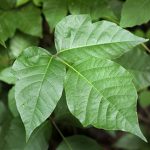
Poison ivy can be found across the entire United States. You can come into contact with it while hiking in the woods, but it grows virtually everywhere — roadsides, fences, weedy areas. Poison ivy leaves grow in clusters of three on vines that can grow up into trees and trail along the ground. The sap of the poison ivy plant is what causes an allergic reaction and can be found in all parts of the plant. Classic signs of poison ivy include swelling, redness, itching and painful blisters.
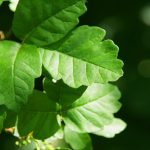
Poison oak has nothing to do with the oak tree but is named for a similar leaf shape. Like poison ivy, poison oak is found throughout the United States, and it grows in forests and woods as well as in dry spots like sandy fields. In spring, the leaves can be red or green. During the summer, leaves are green and the plant grows berries while in fall the leaves turn red and orange. Poison oak rash is most likely to appear around your wrists, ankles and neck where the skin is thinner.

Poison sumac is actually a shrub. The stalk has a reddish hue, and its flower is yellow. Poison sumac likes wetter environments: it’s found near stream banks, ponds, and other wetlands. Like poison ivy and poison oak, poison sumac can cause contact dermatitis, and therefore the symptoms and treatment are the same.
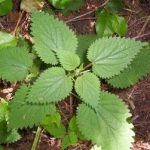
The wood nettle, found at the bottom of streams, rivers, or forests, is actually an herb. The leaves, which are either purple or green, stand straight up and have hairs that stick straight out. These hairs are the stingers and if you come in contact with them they will penetrate your skin. Contact with wood nettle typically results in reddish, itchy welts.
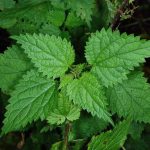
The stinging nettle is another herb with stinging hairs. It grows throughout the United States and can be found close to mountain and within, or near, forests. Resembling a tall weed, the stinging nettle has either pink or salmon-colored flowers that are shaped like hearts. The stinging hairs are found on the leaves and stems. Just as its name suggests, stinging nettles cause tingling, inflammation and pain.
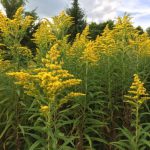
While ragweed is a common cause for seasonal sinus allergies, what is not so widely known is that ragweed can also cause skin rashes if you touch them. These plants are often found in rural areas and open spaces that get plenty of sunlight. Coming in contact with ragweed may result in an itchy, painful rash that is usually comprised of small bumps and blisters.
Prevention
Preventing these uncomfortable skin reactions involves some common sense steps.
- When gardening, doing yard work or going for a hike, cover as much skin as you can. Wearing gardening gloves can prevent many plant materials from piercing your skin. Long pants and sleeves can also prevent accidental contact with low lying plants like the ones previously listed.
- Avoid touching your face and eyes when working with outdoor plants.
- Look before you take your next step especially if you are hiking in the woods.
In trouble?
If you have come in contact with any skin irritating plants wash the area thoroughly with plenty of running water and soap. Use an over-the-counter steroid cream and antihistamines, if needed, to control itching and irritation. If these steps do not control your symptoms, or if symptoms worsen, the skin health experts at Forefront Dermatology are ready to help. To find the Forefront dermatologist nearest you, visit the locations page today.
